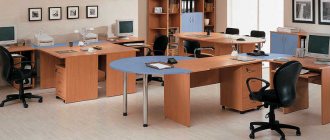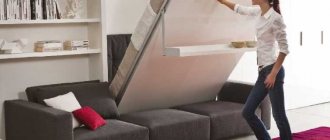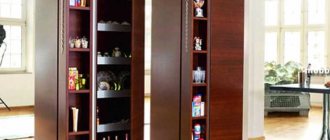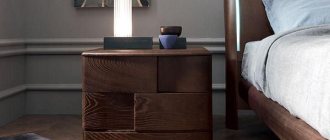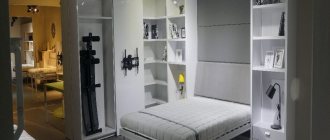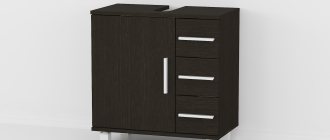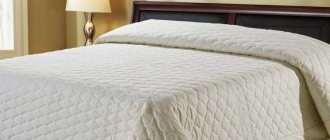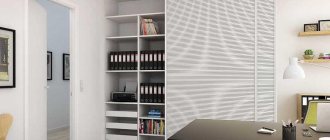Are you tired of loud knocks and noises from closing kitchen doors? Do your children regularly injure themselves and pinch their fingers? It may be worth considering installing shock absorbers that will protect you from unwanted injuries and noise. Made in different design options, they will fit perfectly into the design, will not spoil it and will last for many years without replacement or difficult maintenance. Installing them is not difficult; sometimes it is enough to remove the protective film and place the selected product in the desired place.
We will talk about the types of dampers, their advantages, and installation methods in this article. We list the most common varieties and indicate why they are so popular. Let's say how to install here or another model of accessories in your headset.
Purpose and benefits
Such a tiny structural detail plays an important role in ensuring comfort when using cabinet doors and cabinets. It is for this reason that it is worth learning more about the varieties of this furniture fittings.
Dampers are various types of parts that can soften the contact of two surfaces.
In other words, even an ordinary rubber gasket can be called this. If we are talking specifically about a furniture device, then it has some features in its structure and use.
In practice, the damper is a special part required during assembly. This is a kind of shock absorber that will allow a furniture facade that opens upward to be fixed in the open position. In this case, you do not need to additionally hold the door with your hand to get the contents of the shelf, which is very convenient.
Of course, this is far from the most innovative fittings. It was invented quite a long time ago, but nowadays manufacturers are improving the creation of this part in order to make products as functional, practical and durable as possible.
There are several options for dampers, the simplest of which is self-adhesive. It is a disk with a diameter of 7-10 mm and a thickness of 1.5-2 mm. It is made of soft material that perfectly dampens the sound from the closing door. This type has an adhesive layer, making it very easy to stick to the end of the cabinet. It is worth noting that this is the most common way to fix the door slamming problem.
Compared to closers
Strictly speaking, shock absorbers partially perform the function of a closer. They only dampen the impact, making the closing of the facade silent. The hinge itself reaches the closing position of the door.
Considering this fact, it would be fair to mention those dampers that have nothing to do with hinges, but functionally play the same role as overhead door closers and shock absorbers - they dampen the impact of the door on the body when closing the facade.
What is a damper in furniture?
Today, the widespread use of conventional door hinges in furniture design is fading into the background. An increasing number of manufacturers, and even those who create it with their own hands, give preference to more modern fittings, which act as an alternative. We are talking about furniture lifts or shock absorbers.
Do I need a gas shock absorber?
Many people mistakenly believe that a gas shock absorber for furniture is an unnecessary luxury. But if equipped with hinged hinges or springs, the products are susceptible to premature failure due to constant knocking when the doors are suddenly closed. In addition, the sound accompanying such closing is unpleasant to the ear.
To avoid inconvenience, experts recommend installing piston dampers that smoothly slow down the movement of the facade and ensure quiet closing of the door. Some people confuse shock absorbers with other functional mechanisms, calling them furniture closers, although these mechanisms are responsible for performing other functions in cabinet furniture.
Types of shock absorbers
Based on the type of opening, there are systems for swinging facades up and down, mechanisms for folding facades and universal lifts, which can be mechanical or gas.
Damper fittings for modern furniture are divided into two types:
A furniture shock absorber is a gas or oil damping system that looks like a sleeve with an elastic button that takes the blow of a closing facade, smoothly softening the process and returning it to its original position.
On the topic: “Barber” is a profession of the past, relevant in the 21st century
Thrust buffers (bumpers), which are no less popular, like gas shock absorbers, ensure silent closing of the door.
Outwardly, they resemble a silicone or plastic gasket attached to the end of the case. Such a system eliminates the sound effect when closing the door, but does not in any way protect the fastening system from rapid wear of mechanism parts.
This type of “shock absorbers” is intended only for light types of facades.
How to choose a lift
Such systems are used in the design of furniture with both light and heavy facades. The choice of shock absorber model for furniture depends on the weight of the hanging structure. The lift should be able to easily handle the expected load.
One facade (door) is attached to two lifts. When buying them, you must choose identical mechanisms from the same batch, with the same characteristics. Otherwise the door may become askew.
Advantages of mechanisms
The main advantages of the products are determined by:
- Smooth closing of the facade doors, ensuring safety in the room.
- Elimination of unwanted closing or slamming, accompanied by loud bangs, which helps extend the service life of both the door itself and the facade frame.
- The main difference between a gas shock absorber is its smooth operation. Some of the mechanisms can hold the facade in an intermediate, half-open or any state fixed by a person.
- In addition to ensuring smooth movement of doors, modern door shock absorbers are credited with another property: simultaneous transformation of the facade to its original position and latching of the lock.
Operating principle of the mechanism
Mechanical systems operate using a spring, while gas systems are more complex. A furniture gas shock absorber is presented in the form of a sealed piston, inside of which, when opening/closing the door, an inert gas contained in a special chamber circulates.
The piston, pin and rubber parts are protected from corrosion thanks to a special anti-corrosion system. The internal elements of shock absorbers for furniture are not influenced by negative factors, being in an absolutely sealed state.
Features of installation of damper devices
Shock absorbers are mounted on doors of various types, not only on furniture, but also on interior, special and entrance doors with additional protection.
A device such as a damper has earned popularity due to its reliability, practicality and long service life of the device. Modern shock absorbers for furniture can be installed independently on an external or internal door in a residential area, or they can complement the overall security system of the room or building as a whole.
In the first case, the mechanism is configured manually during installation or operation; in the second, it is synchronized automatically, being one of the links in the electrical safety network.
Dampers are mounted by cutting or placing them on the facade or door. For the latest models of dampers, a special adapter is purchased along with a furniture shock absorber, the installation of which depends on additional elements.
The choice of the type of device described and the exact position of its fixation depends on the type of furniture facade or door structure: its width, weight, additionally used fittings. Before final fastening of the mortise furniture shock absorber, it is recommended to make a test fastening to check the level and symmetry.
Source: https://71mebel.com/chto-takoe-dempfer-v-mebeli/
Types of mechanisms
The purpose of such devices is identical, but the types may vary. They differ in design, appearance and installation features.
Furniture shock absorbers are classified based on their functioning mechanism:
- on hydraulics - they look like a cylinder with protruding pistons;
- on pneumatics - they are a complex mechanism that is used in combination with lifts.
Hydraulic products, in turn, are divided into:
- flow stabilizers;
- pulsation products;
- hydraulic shock mufflers;
- dampers.
Based on the installation features, there are overhead shock absorbers, mortise shock absorbers and hinged shock absorbers. A big advantage of overhead structures is the ability to replace them if they break. But the mortise shock absorber is almost invisible, which makes the furniture more aesthetically attractive.
There are also dampers for narrow and wide furniture facades. For example, a door up to 50 cm wide should be equipped with a product with a power of 60 Newtons, and wider options should be equipped with a mechanism with a power of about 100 Newtons.
Types of furniture dampers
- Closers with shock absorbers. Mechanical structures of pneumatic or hydraulic type. Complex but effective. They not only regulate the speed of slamming the shutter, but also fix it in the desired position - open, half-open, closed. This simplifies the operation of the furniture, since the door does not need to be held by hand when swinging open.
- Bumpers. Made of rubber or silicone, they are small circles, drops or ovals with an adhesive edge. They are easy to install and dismantle and retain their original shape for a long time. They are used more often than others and are ideal for decorating kitchen units in a home where there are small children.
- Edges. They are glued along the edge of the cabinet around the entire perimeter. Most often they are made of dense fleecy fabric, which wears out over time. They don't look so attractive, although they dampen the sounds of impacts well.
- Hinge dampers. They are built into some structures and prevent the sash from slamming quickly, softening its closure and slowing it down.
- Mortise shock absorbers. Small pins with cylinders that are mounted into the furniture body and prevent the doors from slamming or hitting hard.
What materials are they made from?
In the production of dampers, different materials with unique performance parameters are used. To ensure that the fittings serve for a long time, are functional, and provide the user with silent operation of the cabinet, silicone and rubber dampers are used.
Such shock absorbers last quite a long time, although breakdowns sometimes occur. The material has an affordable price and incommensurable benefits.
Silicone
The silicone shock absorber is made in the form of a primitive round piece, which is highly soft. Silicone parts have an adhesive side, which is used to fix them to the surface.
The self-adhesive damper is also unique in that it can protect a small child from injury. Children often love to play with the doors of kitchen units and drawers in the closet, pressing their delicate fingers. Thanks to the presence of such shock absorbers, this can be avoided.
Manufacturers offer different options for silicone shock absorbers:
- transparent;
- white;
- beige.
This allows you to choose the most invisible option against the background of furniture.
Rubber
The rubber damper is a mortise part located in places where one surface constantly impacts another. For example, at the end of the shelf that is in contact with the door. Shock absorbers of this type perform the functions of a shock absorber, as well as a sealant for the façade vestibule.
The service life of such products is quite long. If necessary, it is quite possible to install them yourself at home.
An indispensable damper (what is it in avionics)
Modern on-board electronic equipment is unable to operate without an aeroelastic vibration damper. Every aircraft tests them. The damper is designed to dampen short-term vibrations of the aircraft in automatic mode. In this case, its role is extremely important, since it is necessary to prevent the aircraft from swaying, leading to overloads and destruction of all its structures. Such a damper is a whole system of gyroscopic sensors that control the angular movements of the aircraft, an electronic circuit for processing and amplifying signals. But this is not a complete list of the elements of this device. There are also actuators included in the mechanical control wiring that allow you to control the damper. What does this give the pilot? Thanks to these units, the damper signals do not mix with other sounds of the automatic control system (automatic control system).
Tips for choosing
The cheapest and easiest option for installing furniture fittings is silicone adhesive shock absorbers. You just need to select a place to fix it, remove the protective film, apply it to the surface and press for a few seconds. Instant installation allows you to make the process of closing the doors virtually silent.
Loop dampers are much more difficult to install. They can confuse a person without experience. It is important to strictly follow the rules here. Installation of a shock absorber of this type is carried out after the furniture has been assembled with all the accompanying fittings. It is worth paying attention to the existing loops. If they do not have a groove for the shock absorber, installation will be impossible.
It is recommended to use dampers and hinges from the same manufacturer, as this will ensure a single, seamless design.
When choosing mortise or overhead structures, the hinge device will not play any role. On overhead products there is a special installation platform, but on mortise ones there is none.
The advantage of an overhead damper is the ability to replace it if it breaks, although this happens extremely rarely. A mortise shock absorber will be much more difficult to replace, but its advantage is that it does not take up space inside the cabinet.
Hinges: what they are, what they are, and which ones to choose for which furniture
Furniture hinges are elements of fittings that allow the door to be opened to a certain angle.
The additional function of the hinge is to hold the façade cover in the closed position. Hinges are made from steel sheet by stamping and plated with nickel for corrosion protection and an attractive appearance. Different types of hinges are used for different furniture materials. For chipboard and MDF, however, and not only for them, four-hinged overhead, semi-overlay and inset hinges are used. They are not very easy to adjust, but are unpretentious and durable. Such loops require preliminary insertion into the material itself to ensure a larger contact area. The thing is that MDF and chipboard materials are porous and not dense enough, so screws screwed into them can fall out under load; the design of such a hinge significantly reduces this load. They differ in the option of placing the front door on the side walls. When using an overhead hinge, the door is completely superimposed on the wall - the most common and budget option. Inset hinges are used when it is necessary for the door to fit completely into the niche of the cabinet. Semi-overlay hinges are needed, for example, for three-door cabinets, when two doors are attached to one wall from different sides; in the closed position, the door is half overlapped with the end of the wall, leaving a free part of the end for the other door. Adit hinges - necessary for attaching the movable door to the false panel.
For solid wood furniture, different hinges are often used. For example, card, screw-in (pin), mortise - they are similar to those used when installing interior doors. Such hinges are not only easier to install and adjust, in addition to their main function, they have another function - decorative, which makes them more attractive.
Glass furniture uses its own hinges, which clamp the glass part like in a vice. Some of them involve drilling glass, but this is not necessary; better representatives allow installation without preparing holes.
Which hinges to choose is, first of all, a question of price: the more expensive the hinges, the better the metal from which they are made, the more flexible they are in adjustment, and the longer the resource of their use. Hinges with an extended opening angle (up to 180 degrees) are quite convenient and recommended. Also, hinges with closers are very comfortable - when the hinge itself “holds” the door until it closes.
How to mount correctly
Before purchasing a shock absorber, you need to find out the specifics of its installation and understand whether you can install such an element on furniture yourself.
Features of installation of various types of dampers:
- silicone - glued to the end of the cabinet with the adhesive side;
- products on a loop - fastening is done on a loop;
- mortise - cuts into the surface of the shelf;
- invoice - installed on the end of the shelf.
Silicone products are the cheapest and most accessible type of shock absorbers, which are very easy to stick to the surface of the cabinet. Within a couple of seconds after installation, the furniture can be used, and the process of closing the door will be almost silent.
Installing fittings on a hinge for furniture doors can cause some difficulties for a person without experience in such matters, since the fastening process must be carried out strictly according to the rules. Dampers are installed after installing the furniture structure, for which the hinges must be equipped with a special groove for the shock absorber. If you select these components from one manufacturer at once, you can be sure that the products will be reliably connected into a single structure.
Installation of overhead and mortise products is not as simple as it might seem at first glance.
The overhead damper must be fixed on the inside of the surface of the furniture box, for which you will need the appropriate fasteners.
For a mortise shock absorber design, it is worth making a hole with a diameter of 10 mm and a depth of 55 mm on the end side of the wall of the box, into which you need to install a shock absorber, and then fix it using hardware.
There are no restrictions on the installation location of shock absorbers. The efficiency of their operation depends on many factors, such as installation location, door weight, closing force. However, it is still advisable to maintain a distance of 150-200 mm from the wall on which the hinges are installed.
Fastening rules
To prevent the closet door in a child's room, bedroom, living room or hallway from knocking on the furniture frame, special fittings are used. The type of shock absorber selected determines the specifics of its installation, so before purchasing it is important to understand whether you can install such an element on the furniture yourself.
| Damper type | Installation features |
| Silicone | Sticks to the end of the cabinet with the adhesive side |
| Loop products | Attached to a loop |
| Mortise | Cuts into shelf surface |
| Invoices | Installed on the end of the shelf |
Silicone products are the cheapest and most accessible type of shock absorbers, which are very easy to stick to the surface of furniture. To do this, you simply need to remove the protective film and press the product onto the surface. After just a couple of seconds, the furniture can be used, and the process of closing the door will be almost silent.
Installing a furniture damper on a hinge for furniture doors can cause some difficulties for a person without experience in such matters, since the fastening process must be carried out strictly according to the rules. Shock absorbers are installed after installing the furniture structure, for which the hinges must be equipped with a special groove for the shock absorber. Select hinges and shock absorbers from the same manufacturer at the same time. Then you can be sure that the products will be securely connected into a single structure.
Overhead and mortise products are not related to the design and type of hinge. The first dampers have a mounting pad, the second ones do not. Their installation is also not as simple as it might seem at first glance. The overhead product is fixed on the inner surface of the box using special fasteners. For the mortise, you need to prepare a hole in the end of the box wall, where a damper is subsequently installed and secured with hardware.
Kinds
Anti-vibration stands for washing machines: which ones are better and how to install them yourself?
If you need to buy furniture dampers for facades and doors, you will probably have questions about what exactly to choose. After all, there is an impressive range of different designs. Just go shopping for furniture fittings in Moscow or visit Leroy Merlin. You will be surprised how many different MDs there are.
If we rely on the mechanism of operation of the elements, they are divided into 2 categories:
- Hydraulic. Externally they look like a cylinder with protruding pistons;
- Pneumatic. A much more complex mechanism that is part of the furniture lift.
There is also a special classification depending on how the installation is carried out. As a result, the MD element can be applied, self-adhesive, mortise and hinged.
In favor of invoices, I will say that they can be easily and quickly replaced in case of malfunctions. But mortise dampers remain almost invisible during installation. From an aesthetic point of view, this is much more interesting.
The difference in power is also determined. The choice of power depends on how narrow or wide the facades the damper will have to serve. If the door width is no more than 50 centimeters, fittings with a power rating of 60 Newton will suffice. If it is a wider type of structure, a power of at least 100 Newton is required.
